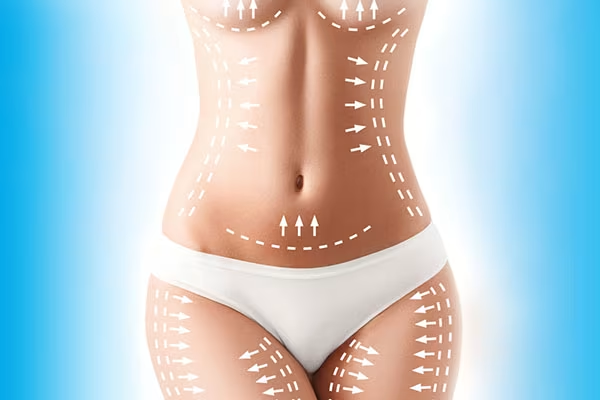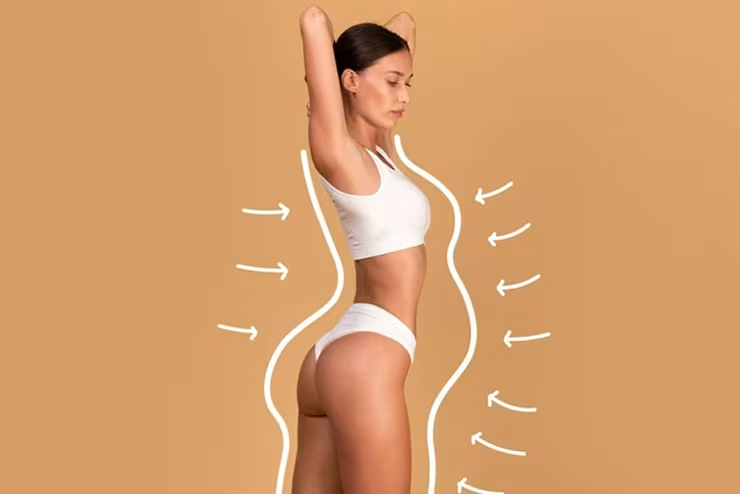The lower body lift, an increasingly prevalent transformative body contouring procedure, is gaining popularity. This surgical procedure is also referred to as belt lipectomy because the incisions encircle the body like a belt.
This procedure is designed to address the aesthetic concerns of individuals who have undergone significant weight loss, resulting in sagging skin and stubborn fat deposits in the lower body region.
A lower body lift can improve body proportions by removing extra skin and fat and enhancing the contours of the waist, buttocks, and thighs.

The Lower Body Lift: An Overview of This Growing Procedure Trend
Lower body lifts are a type of body contouring that has become incredibly popular in recent years. This body lift surgery is a comprehensive approach to achieving an improved body shape and contour, particularly after a dramatic weight loss. It is a type of plastic surgery that primarily targets the lower torso and upper thighs.
After a significant amount of weight loss, the abdomen, buttocks, and thighs become common areas of concern. The body lift procedure targets the sagging skin and extra tissue in these areas. The procedure falls under the body lift umbrella, which also includes upper body lifts and other body lifts designed to enhance different body regions.
The popularity of the lower body lift can be attributed to several factors. Firstly, it addresses the loose skin and fatty deposits that often remain after achieving the goal weight, especially following bariatric surgery or extreme weight loss.
Ideal lower body lift patients have kept a steady weight for a minimum of six months before surgery, are near their ideal weight, comprehend the procedure’s restrictions while holding realistic expectations, and possess good physical and mental health. These patients who are interested in this procedure usually have excess skin that cannot be eliminated through exercise or a healthy diet, and they seek body contouring assistance to achieve their aesthetic goals.
How Body Lift Works and What it Targets
During the course of this procedure, incisions are made around the torso and lower body, allowing the surgeon to remove excess fat, skin, and tissue. The newly shaped contours are supported and helped form by deep sutures within the underlying tissues. The remaining skin is then pulled taut, and the incisions are stitched closed. The skin incisions may be closed with sutures, skin adhesives, tapes, or clips.
By excising excess skin and tissue, this surgery can help flatten and tighten the abdomen, elevate the buttocks, and reshape the thighs and hips. A body lift procedure targets common problem areas for patients who have lost a significant amount of weight.
Though it produces dramatic results, a full body lift is a major operation. The incisions will create permanent scars. The surgeon carefully positions the incisions to hide scars within natural body folds, undergarments, swimwear, and regular clothing. Over time and with the appropriate care, the scars will fade significantly.
The Benefits of a Lower Body Lift:
Improved Body Proportions
One of the main benefits of a lower body lift is the improvement in body proportions. This procedure helps to achieve a more balanced figure by addressing sagging skin and unwanted fat cells in the lower body region.
Elimination of Excess Skin and Fat
A lower body lift removes excess skin and fat, especially from the thighs and buttocks, benefiting those with sagging skin after major weight loss unimproved by diet or exercise.
Enhanced Contours
The lower body lift is an excellent body contouring procedure that sculpts and defines the lower body, resulting in a more toned and attractive appearance. This cosmetic procedure tightens the skin and refines the contours of the waist, buttocks, and thighs. Liposuction may be necessary during surgical body lifts to obtain a better contour.
Boost in Confidence
The physical improvements from a lower body lift often lead to a significant boost in self-confidence. Feeling more comfortable and confident in one’s own skin can positively impact various aspects of life, from personal relationships to professional interactions.
Who is a good fit for this procedure?
The ideal candidates for a lower body lift procedure are those with excess, sagging skin on the buttocks and outer thighs, frequently due to substantial weight loss. It is vital that patients are at or near their target weight and have maintained a steady weight for a minimum of six months before undergoing this surgery.

What to expect after a Lower Body Lift surgery
Patients may feel thigh and buttock pain for the first several days following lower body lift surgery. Most patients can resume public activities within three to five days, but strenuous activity should be limited to four weeks to allow for an adequate healing process.
Considerations and potential risks
A lower body lift is a major surgical procedure that requires careful consideration of the risks and recovery involved. However, the surgery involves large incisions around the torso and thighs, which can leave permanent, visible scarring. Patients need to be mentally and emotionally prepared for the significant scarring.
There are also risks inherent in a large-scale surgery, including bleeding, infection, adverse reactions to anesthesia, and blood clots. Throughout the protracted recovery period, swelling, bruising, and discomfort are common. The surgery can also damage tissue and nerves in the treatment areas. Proper surgical technique is vital to minimize risks.
Overall, the lower body lift procedure must be approached cautiously by patients who have realistic expectations about extensive scarring and a difficult recovery period. Consulting thoroughly with the surgeon is important to understand the profound risks and lifestyle changes involved with this permanent body modification.
Conclusion: Is a Lower Body Lift Right for You?
Choosing a lower body lift, a body contouring procedure addressing saggy skin and excess tissue in the abdomen, buttocks, and thighs, is personal and often follows a dramatic weight loss journey. This decision, influenced by factors like body lift cost, risks, and recovery process, requires careful consideration.
A one-on-one consultation with a board-certified plastic surgeon like Dr. Paul Vitenas, an award-winning aesthetic plastic surgeon experienced in body contouring techniques, is crucial. During this initial consultation, the surgeon evaluates your anatomy, body shape, and skin condition, including skin elasticity loss due to aging, genetics, or massive weight loss.
Body lifts in Houston, at Vitenas Cosmetic Surgery help people who have lost a lot of weight reflect a new, more positive view of themselves.
If you’re considering a lower body lift, schedule a consultation with Dr. Vitenas by calling 281-484-0088.
